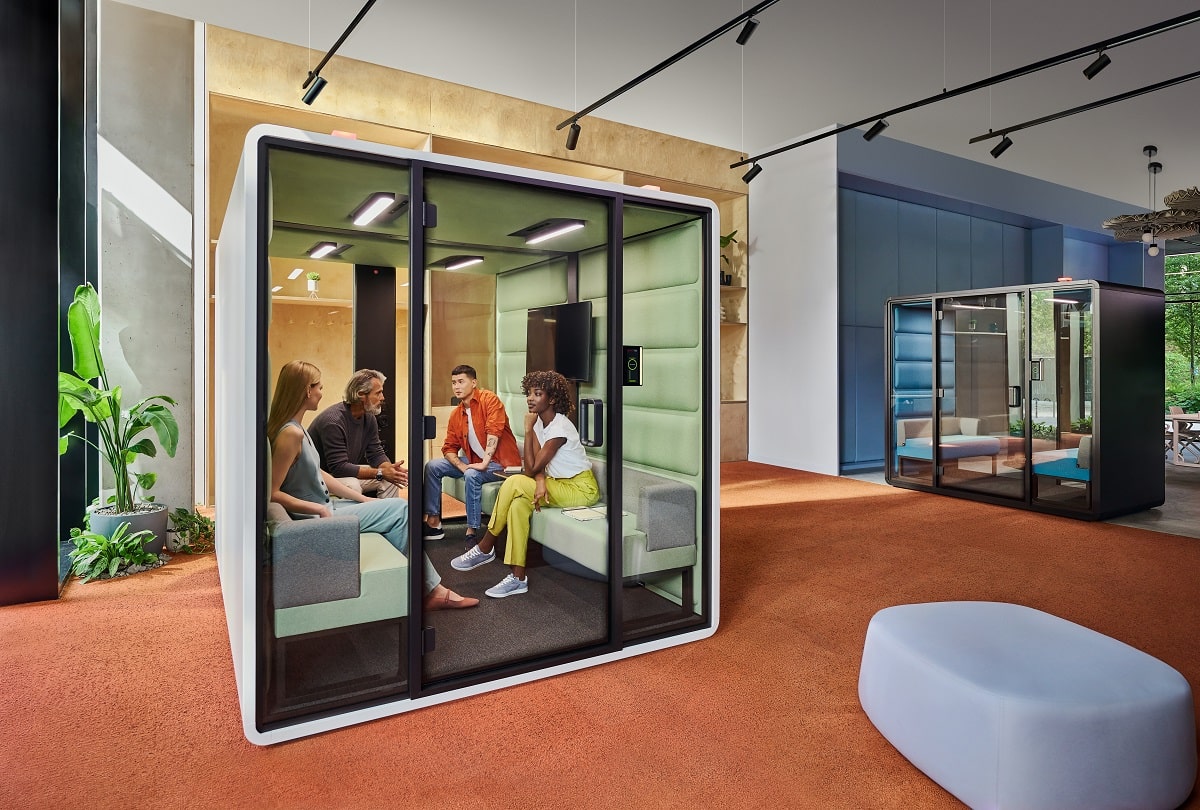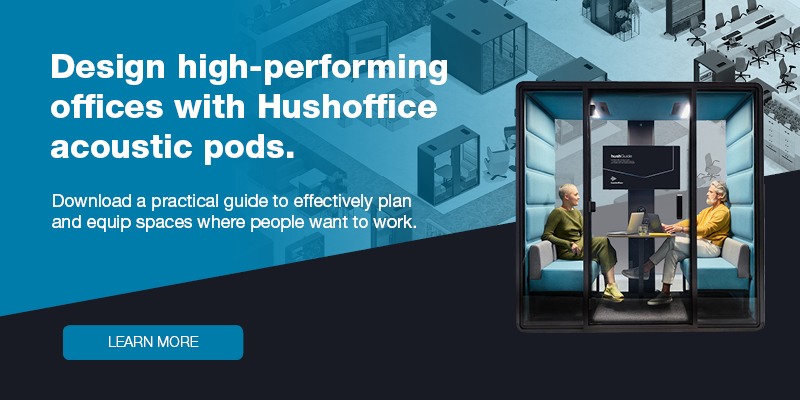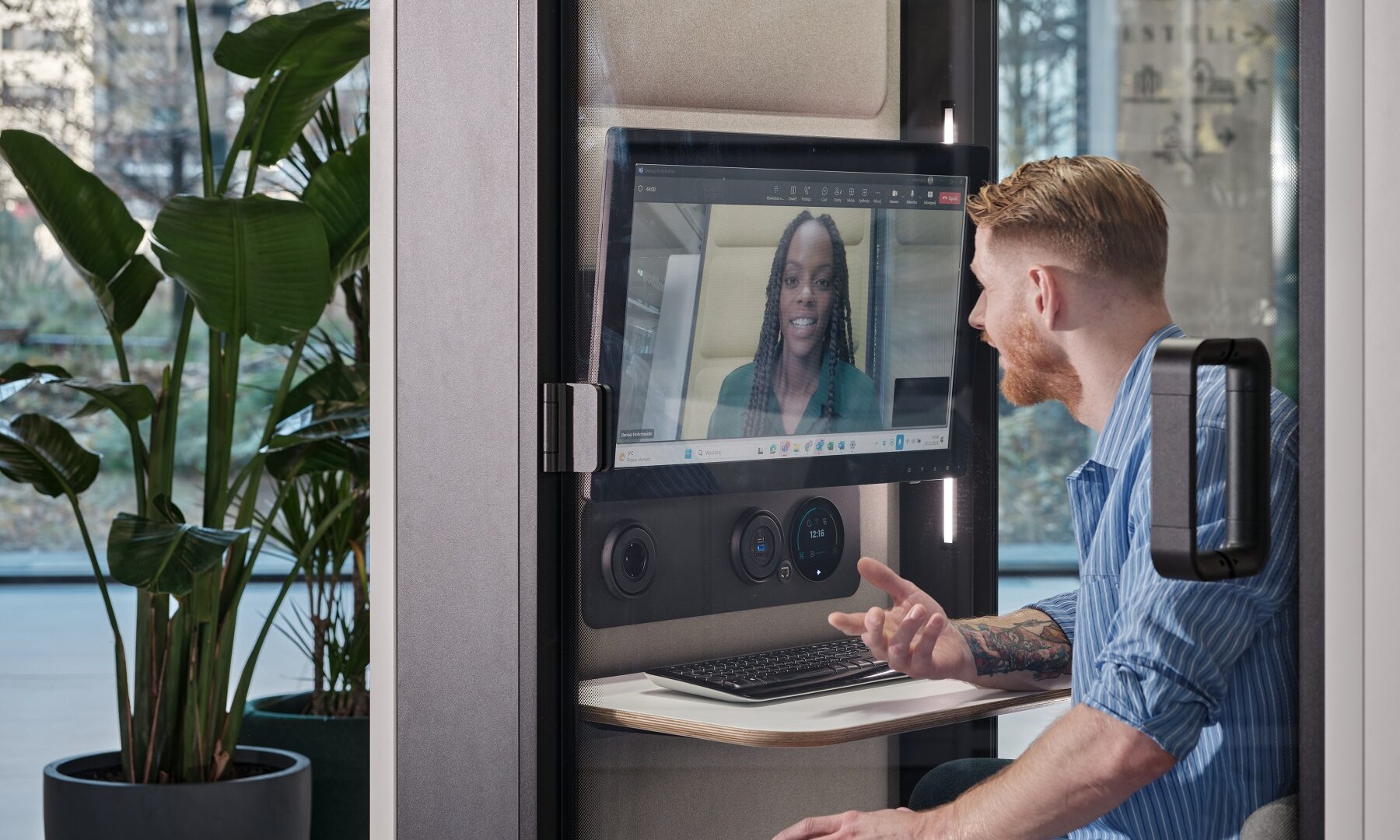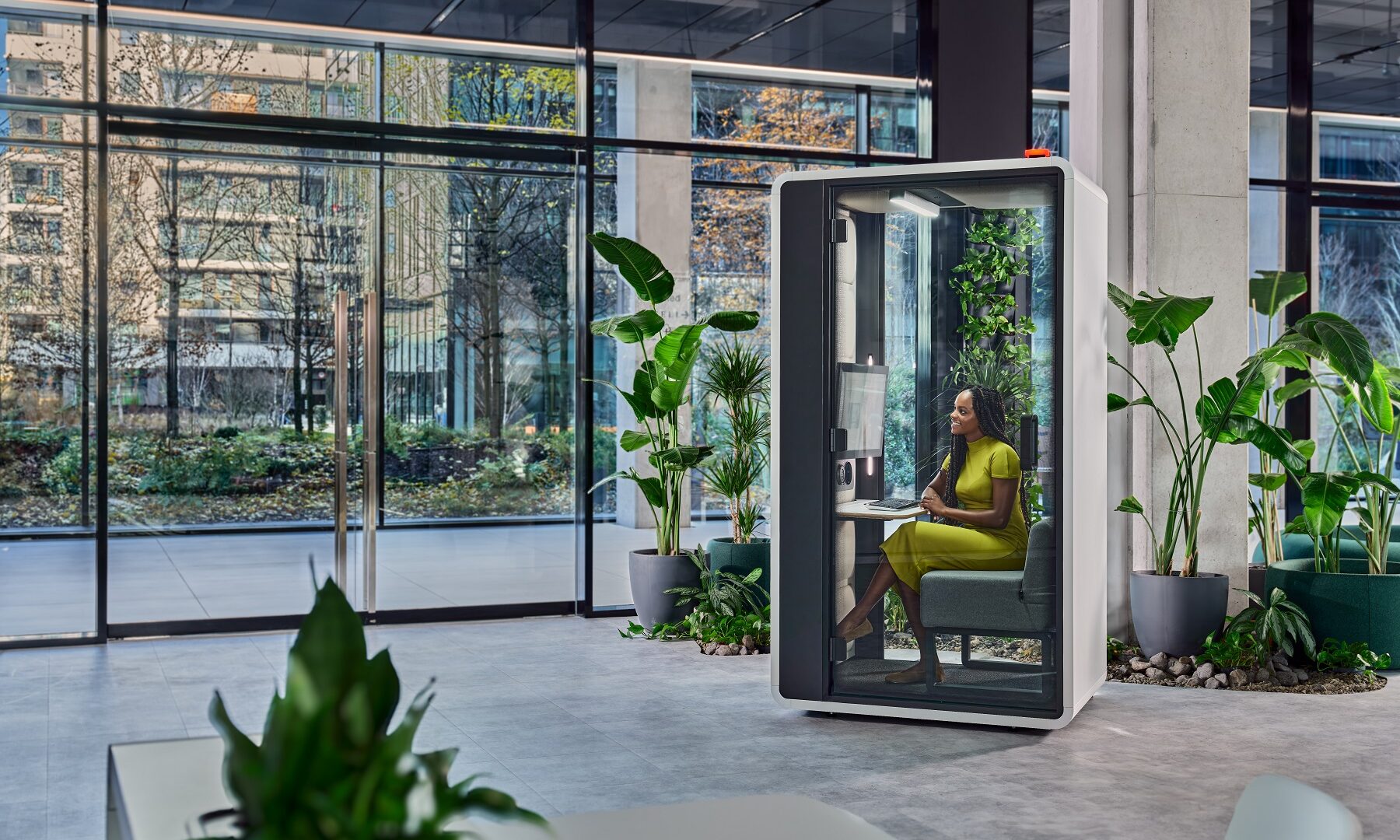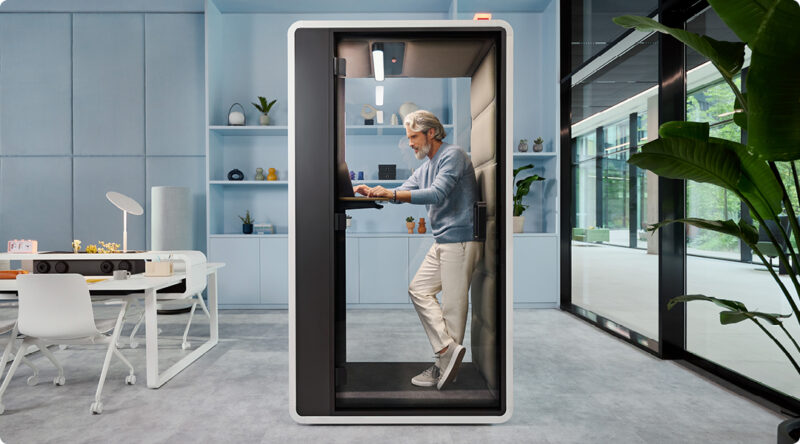On the job monotony a problem? Inject some variety.
- Posted on: 13 June 2025
- By: Hushoffice Team
If each assignment starts feeling like déjà vu, your motivation’s likely dipping. But dullness isn’t a given — it’s often a cue to shift gears. Here are a few tested ways to refresh your rhythm and re-energise even repetitive, routine work.
Breaking the monotony at work – tl;dr
- Almost half of today’s workforce reports feeling stuck in repetitive loops, with one in five bored on a daily basis. It’s a sign that uniformity drains enthusiasm. Try reimagining routine tasks (turn a spreadsheet into a narrative, for instance), take regular pauses, or step into a new environment like a hushFree booth to revive interest.
- Research shows around 45% of employees jump from one task to another without taking a moment to regroup — a fast track to mental burnout. Building simple, mindful habits like pausing after complex tasks, tuning in to your body, or switching spaces (say, from open plan to a hushFree pod) sharpens focus and fosters emotional balance.
- Just a routine can’t sustain engagement — the brain craves variety. Adjusting your desk setup, experimenting with lighting, or rotating between team zones and secluded booths supports creative thinking. Einstein’s idea that ‘creativity is intelligence having fun’ still rings true — but that fun needs a fresh setting from time to time.
- Constant disruptions break concentration, turning even engaging jobs into disjointed chores. That’s where soundproof booths such as hushFree come in — essential for open-plan layouts. These calm, focused spaces help you dive deep into work, restore clarity, and turn routine tasks into moments of flow.
When the workday starts feeling overwhelming…
If we start to lose a feeling of purpose, the hours begin to blur. One task blends into another, and although we stay busy, that sense of meaningful momentum often disappears. So, what’s behind this drop in drive?
Why does motivation taper off?
Even thrilling projects can start to drag when the novelty wears off. Emotional, mental, and shifts in space are needed to keep momentum going — the mind naturally seeks change to stay sharp. When daily patterns become too fixed, so, too, does our energy. The human brain, built to seek variation, stalls in the face of sameness.
Lacking motivation, we begin drifting.
Procrastination tends to creep in when we’re uninspired. Hours slip by in avoidance, and work becomes a response to obligation rather than an expression of intent. This dynamic is alarmingly common — disengagement now affects nearly half the workforce.
To restore motivation, blend positive psychology and actionable strategies.
Leaning into your strengths. Cultivating supportive colleague connections. Linking repetitive duties to a broader purpose. Or spending solo time in the quiet of a booth — small, thoughtful steps like these can break the cycle of burnout. They also help you view even mundane tasks as stepping stones in a larger narrative.
Changing your workspace from time to time boosts mental engagement.
Einstein’s famous remark about creativity being intelligence at play underscores an important truth: fresh thinking needs fresh spaces. A shift in scenery — even from desk to lounge chair or from busy floor to silent booth — can invigorate the brain.
- Altering your physical surroundings during the day can lead to improved motivation and stronger performance.
Why not try reworking your setup to encourage creativity?
Start simple. Turn some desks towards the windows. Use different lighting styles to reflect the task — warmer tones for deep thought, cooler tones for focus. Add clear zones: social spots for group work and hushFree booths for distraction-free solo sessions. A varied landscape keeps the mind engaged.
Too much information kills performance. A top culprit is noise.
When the brain is flooded with signals, it puts up defences to cope. Mental sharpness fades and deadlines slip. In such cases, silence becomes restorative. A hushFree.M boot for teams offers more than quiet — it’s a space to regain your composure and control.
Smart acoustic pods like hushFree are a must in open-plan layouts.
As shared spaces dominate modern office design, pods and cabins have become our best defence against overstimulation. These soft but structured sanctuaries offer clarity. They help you tune in — not out — and give your thoughts room to breathe.
Booths and pods do much more than mute background noise. They break the spell of monotony,” says Principal Brand Manager, Mateusz Barczyk, of the Hushoffice team. “If you’re caught in repetitive loops or fighting to remain inspired, stepping into a well-equipped, video-ready booth like the hushFree.S.Hybrid makes for an entirely different tone. It’s quieter, more focused, and purpose-built. The shift resets your mental state — a built-in change of scene that sparks renewed concentration.
Rediscovering meaning in work is key to wellness.
A phenomenon known as “boreout” — where workers feel chronically under-stimulated — can lead to stress, poor sleep, and even depression. Some analysts suggest it’s among the top reasons people leave jobs. That’s why building a genuine connection to your work, and having access to quiet, undisturbed space, matters so much.
Managing your schedule wisely can help break the monotony.
Good time planning isn’t about stuffing more into your day — it’s about matching your energy with the right tasks. Let your natural rhythms lead your calendar, carving out space for effort and space for ease.
Which techniques actually help you manage time well?
Methods like pomodoro, task batching, and time-blocking remain popular because they just work. This is especially so when they’re customised to suit your own habits. Combine these approaches with flexible use of space (for example, shifting from an open desk to a hushFree.XS booth) and you can tap into renewed motivation and clarity.
Frequent pauses can fuel enthusiasm.
Getting energised at work isn’t always about pushing harder — often, it’s about brief, deliberate breaks. There are countless ways to integrate pauses into your routine. Build buffer time into your calendar by scheduling meetings with breathing room before or afterward. Pair regular tasks with mini-breaks — even stepping out to the loo can lead to a quick lap around the office. Have a go-to activity ready for whenever an unexpected gap arises. For example, if you’re waiting for a reply, go through a short stretch sequence. A productive day has its rhythm, and breaks are part of that beat
– explains Mateusz Barczyk, Hushoffice Principal Brand Manager.
- Around 45% of employees admit they leap into the next assignment without taking time to pause or acknowledge what they’ve just completed.
So, what is this mindfulness? How might it benefit your working life?
Mindfulness is nothing mystical — it’s a skill honed by simply noticing what’s going on, without trying to change it. That means observing your inner world from a bit of distance, which often diffuses stress. Quiet, enclosed pods like hushFree.S support this practice.
Small, mindful habits at work lead to lasting shifts.
The essence of mindfulness is present-moment awareness — not fixing or reacting, just noticing. That might look like making a quick check in with yourself first before a meeting begins. Or make a mental scan of your body after a challenging task. Observing your own reactions when an email annoys you. Even enjoying each sip of tea fully.
How do small tweaks lead to big changes?
The strength of mindfulness lies in how little it demands. You don’t need a lifestyle overhaul — just a few conscious habits woven into your existing day. Over time, these create a steadier, calmer mental state and sharpen your focus.
Tell a different story to refresh “routine” tasks.
Reframing helps. A spreadsheet isn’t just data — it’s a narrative with a point. Alternate solo time with moments of team exchange. Use your office landscape strategically — perhaps the lounge for idea generation, hushFree.L for precise planning. Changing context re-engages your attention.
Can’t get into gear? Try shifting your physical setting.
A change in environment often helps spark commitment. When you step into a new space with a clear intention, you’re more likely to follow through. It’s very different from staying at your desk, a place where it’s easy to get sidetracked in the same place.
Learning opportunities can reignite your professional spark.
Even a brief lunchtime webinar or micro-course can set you thinking in new directions. When taken in the calm, spacious hushFree.L booth, those ideas have room to take root — and can even be explored with colleagues.
Mindfulness practices — even tiny ones — don’t just lift your mood. They transform your experience of the day. The brain can be rewired by short, consistent attention to the present. This strengthens our capacity for focus and steadier emotion. Pausing for a breath or two before hitting send or stretching between calls might seem minor, but they add up. With time, you’re more resilient. The workday doesn’t feel like one long rush anymore — it feels doable, because you’re in it moment by moment
– explains Mateusz Barczyk, Hushoffice Principal Brand Manager.
Breaking the monotony at work – summarized
- Almost half of today’s workforce reports feeling stuck in repetitive loops, with one in five bored on a daily basis. It’s a sign that uniformity drains enthusiasm. Try reimagining routine tasks (turn a spreadsheet into a narrative, for instance), take regular pauses, or step into a new environment like a hushFree booth to revive interest.
- Research shows around 45% of employees jump from one task to another without taking a moment to regroup — a fast track to mental burnout. Building simple, mindful habits like pausing after complex tasks, tuning in to your body, or switching spaces (say, from open plan to a hushFree pod) sharpens focus and fosters emotional balance.
- Just a routine can’t sustain engagement — the brain craves variety. Adjusting your desk setup, experimenting with lighting, or rotating between team zones and secluded booths supports creative thinking. Einstein’s idea that ‘creativity is intelligence having fun’ still rings true — but that fun needs a fresh setting from time to time.
- Constant disruptions break concentration, turning even engaging jobs into disjointed chores. That’s where soundproof booths such as hushFree come in — essential for open-plan layouts. These calm, focused spaces help you dive deep into work, restore clarity, and turn routine tasks into moments of flow.
Breaking the monotony at work – FAQ
Does switching up your workspace really boost drive?
Yes. Even minor changes to your surroundings — a new spot, a different lamp, a quiet pod — help to reboot the attention systems in your brain. It interrupts autopilot and sparks renewed interest. Whether it’s decluttering your desk or slipping into a hushFree booth, fresh energy follows.
What’s the effect of noise on your brain over the course of the day?
Noise overload triggers a stress response, sending cortisol levels up and hurting memory and concentration. With time, this background strain makes work feel draining, even if the tasks aren’t difficult. Calm zones protect your nervous system, letting you stay focused and balanced.
What’s one habit to try tomorrow so as to break the routine?
Between tasks, start using a “reset ritual”. Stretching, walking to a pod, or simply closing your eyes for a moment helps signal your brain: a new phase is starting. It keeps your day from seeming like one long drag and keeps each activity feeling distinct.
